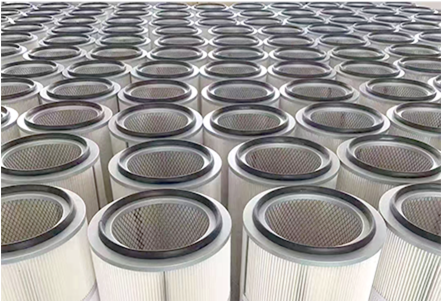 Tel:
+8615930870079
Tel:
+8615930870079
sie . 08, 2024 05:35 Back to list
Exploring the Applications and Benefits of Metal Filter Elements in Industrial Filtration Systems
Understanding Metal Filter Elements Importance, Design, and Applications
In the industrial world, the need for efficient filtration systems is paramount, especially in processes that involve fluid management. Among the various types of filter elements available, metal filter elements stand out due to their durability, high-temperature resistance, and reusability. This article delves into the importance, design, and applications of metal filter elements, highlighting why they have become a preferred choice in numerous industries.
Importance of Metal Filter Elements
Metal filter elements are primarily used to remove solid particles from liquids and gases. These filters are made from stainless steel, aluminum, or other metals that can withstand harsh conditions. Their significance lies in their enhanced durability compared to traditional filters made from paper or cloth. Metal filters can endure extreme temperatures, corrosive environments, and high pressure, making them suitable for a variety of challenging applications, such as petroleum refining, chemical processing, and food manufacturing.
One of the most critical advantages of metal filter elements is their ability to be cleaned and reused. Unlike disposable filters, which must be replaced frequently, metal filters can typically be cleaned through backwashing, ultrasonic cleaning, or chemical methods. This not only reduces waste but also contributes to cost savings over time. As industries increasingly focus on sustainable practices, the reusability of metal filter elements aligns well with environmental goals.
Design Considerations
The design of metal filter elements is crucial for their performance. Various factors contribute to their efficacy, including pore size, filtration medium, and flow direction. Metal filters can feature multiple layers with varying pore sizes to enhance filtration efficiency. For example, a coarser outer layer can capture larger particles, while a finer inner layer can trap smaller contaminants.
metal filter element

Additionally, the choice of metal is vital for ensuring the filter's performance in specific applications. Stainless steel is commonly used due to its corrosion resistance and strength, making it ideal for filtering aggressive liquids. In contrast, aluminum might be preferred for lighter applications. Furthermore, the construction method—whether welded, sintered, or woven—plays a significant role in the filter's structural integrity and performance.
Applications in Various Industries
Metal filter elements find applications in numerous industries due to their versatility. In the oil and gas sector, they are used in separators and strainers to prevent impurities from entering machinery, thus protecting equipment and ensuring efficient operations. The chemical industry relies on metal filters to remove particulates from corrosive substances, maintaining product purity and process efficiency.
In the automotive industry, metal filters are employed in fuel and oil filtration systems, where they enhance engine performance and longevity. The food and beverage sector also benefits from metal filtration solutions, utilizing them to ensure hygiene and safety in processing liquids. In aerospace and marine applications, metal filters are essential to prevent the entry of foreign particles into sensitive systems, thereby ensuring reliability.
Conclusion
Metal filter elements represent a significant advancement in filtration technology, offering durability, reusability, and efficiency across various industrial applications. As industries continue to evolve and adapt to new challenges, the demand for such robust and reliable filtration solutions will only continue to grow. Understanding the unique attributes and versatile applications of metal filter elements is crucial for anyone involved in industrial processes, as they contribute significantly to operational efficiency and sustainability. With ongoing innovations in materials and design, the future of metal filter elements looks promising, paving the way for even greater advancements in filtration technology.
-
Nano Fiber Technology: Revolutionizing Cartridge Dust Collector FiltersNewsAug.06,2025
-
How Activated Carbon Air Cartridges Eliminate OdorsNewsAug.06,2025
-
Dust Filter Cartridge Handling Fine Particulate MatterNewsAug.06,2025
-
Cartridge Dust Collector Filter for Welding Fume ExtractionNewsAug.06,2025
-
Activated Carbon Filter Cartridge Effectiveness Against VOCsNewsAug.06,2025
-
Activated Carbon Air Filter Cartridge Benefits ExplainedNewsAug.06,2025

 Email:
Email:





